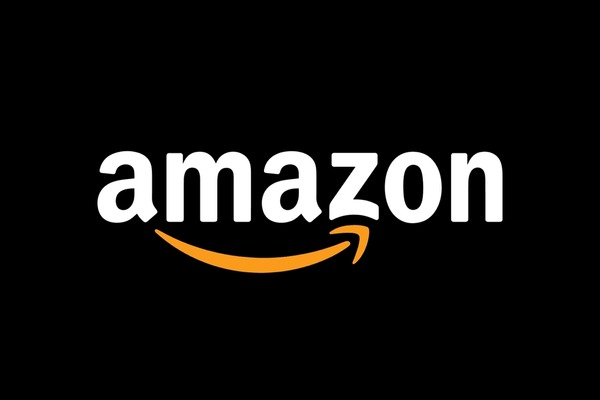 RSS
RSS
Article Tools/Herramientas de artículos
+ Larger Font/Fuente más grande | - Smaller Font/Fuente más pequeñaConsumer Daily Reports

Trusted reliable news sources from around the web. We offer special news reports, topic news videos, and related content stories. Truly a birds eye view on news.
- Details
- Written by Consumer Affairs News
- Category: Consumer Daily Reports
Report: Families drowning in $1.66 trillion in car debt
- U.S. auto loan delinquencies are climbing above pre-pandemic rates and nearing 2008 crisis levels.
-
Consumers now carry $1.66 trillion in auto debt as repossessions accelerate.
-
Consumer Federation of America urges tougher oversight of lenders and dealers.

The Consumer Federation of America (CFA) warns that the nations auto lending market is showing alarming signs of distress. A CFA study finds that more borrowers are slipping into delinquency and default than before the pandemic, with rates approaching the levels seen ahead of the 2008 financial crash.
Americans collectively owe $1.66 trillion on car loans, the CFA reports. As delinquencies, defaults and repossessions rise, regulators charged with monitoring the market have pulled back enforcement, leaving consumers more vulnerable to predatory practices by dealers and lenders.
Car ownership turning into a debt trap
Buying a car should be a way for families to achieve economic success, but it is increasingly becoming an unaffordable burden that pushes consumers down into a debt spiral, said Tara Mikkilineni, a senior fellow at CFA. The group argues that many borrowers are forced into risky loan structures and inflated prices that make default more likely.
CFA consumer protection director Erin Witte said families are in an economic pressure cooker, with car loans jeopardizing their ability to avoid financial ruin. Because households often prioritize auto payments over other obligations, rising delinquencies suggest that deeper economic stress is spreading through U.S. households.
The report urges Congress and regulators to step up oversight, strengthen rules governing auto lenders, and pursue structural reforms to protect borrowers. Without intervention, CFA warns, predatory practices and surging delinquencies could trigger broader financial fallout.
Prevention / What consumers can do
-
Know your credit score before shopping: Lenders often use credit tiers to set loan terms. Improving your score even slightly can mean thousands saved over the life of a loan.
-
Get pre-approved: Secure financing from a credit union or bank before visiting the dealership. This reduces the risk of being steered into high-interest dealer loans.
-
Watch out for add-ons: GAP insurance, extended warranties, and service contracts are often marked up heavily at dealerships. Always ask if these are optional and shop around if you want them.
-
Keep loan terms short: Stretching payments over 72 or 84 months lowers monthly costs but greatly increases total interest paid and raises the risk of being underwater on the car.
-
Dont skip refinancing: If interest rates drop or your credit improves, refinancing can reduce your payment and overall cost.
California passes protective measure
Trying to get a handle on car costs, California Governor Gavin Newsom yesterday signedthe California CARS Act (SB 766), along with several other bills aimed at lowering costs for Californians struggling under the weight of an affordability crisis. The CA CARS Act, partly modeled after the Federal Trade Commissions CARS Rule, requires car dealers to tell buyers the total price of the car up front, bans the sale of worthless add-ons, and it includes a first-of-its-kind three day cooling off period for used car buyers. Senator Ben Allen (D-24) introduced the bill as a way to make buying a car more affordable and less risky in California.
We applaud Governor Newsom and Senator Allen on this landmark achievement to make the process of buying a car less painful for buyers and more competitive for honest dealers,said Erin Witte, Director of Consumer Protection at Consumer Federation of America. Everyone who has wasted hours of their life negotiating with a car dealer over endless fees and dishonest pricing can see exactly why this Act is needed, and we urge other states to follow suit and pass legislation to lower costs for car buyers.
Consumer guide
How to avoid the auto debt trap:
-
Set a budget before shopping experts suggest keeping auto payments below 15% of monthly take-home pay.
-
Use online price tools compare dealer quotes with pricing sites to avoid overpaying.
-
Check for hidden fees document fees, add-ons, and extras can inflate the final cost.
-
Prioritize need over want a reliable used vehicle may be safer financially than stretching for a new model.
-
Know your rights some states regulate dealer markups or cap interest rates on subprime loans; research protections where you live.
- Details
- Written by Consumer Affairs News
- Category: Consumer Daily Reports
Homebuyers file class action in Florida federal court
-
Class action claims the nations largest homebuilder misled first-time buyers with artificially low monthly payment estimates.
-
Lawsuit says D.R. Horton and its mortgage unit concealed true property tax costs, leading to payment shock.
-
Plaintiffs seek damages under RICO, which could triple losses, and aim to stop the alleged predatory practices.
A group of first-time homebuyers has filed a class action lawsuit against D.R. Horton Inc. and its mortgage subsidiary, DHI Mortgage Co., alleging the companies engaged in a deceptive sales and lending scheme that left families with unexpectedly high monthly payments. The suit was filed October 1 in the U.S. District Court for the Middle District of Florida.
The plaintiffs are represented by Varnell & Warwick, Clarkson Law Firm, and the National Consumer Law Center. They accuse D.R. Horton, the nations largest homebuilder, of orchestrating a Monthly Payment Suppression Scheme that low-balled costs in order to lure buyers into larger mortgages.
Allegations of bait-and-switch tactics
According to the lawsuit, sales representatives promised affordable monthly payments while omitting most property tax obligations from the calculations. That omission kept projected payments low enough to persuade buyers to commit. But once loans were sold to new mortgage servicers, many homeowners were stunned to find their actual costs hundreds of dollars higher each month.
D.R. Horton and DHI Mortgage preyed on peoples faith in the American Dream of homeownership to lure them into unaffordable, deceptive deals, said Jennifer Wagner, senior attorney with the National Consumer Law Center.
Example of payment shock
One plaintiff, Frankie Santiago, was told his monthly payment would be $2,164.68 for a Lake County, Florida home. Less than a year later, an escrow analysis added the full property tax bill and back taxes. His payment jumped nearly $1,000 to $3,136.33.
The lawsuit claims the home builder and its mortgage company were working together from the initial sales pitch to closing, presenting artificially low monthly payments that set buyers up for payment shock, said Jeffrey Newsome of Varnell & Warwick.
Potential damages under RICO
The case also invokes the federal Racketeer Influenced and Corrupt Organizations Act (RICO), which allows victims to seek triple damages. If successful, homeowners nationwide who were affected could recover significant sums.
Our goal is to recover damages for people whove been cheated and prevent future homeowners from being drawn into this predatory scheme, said Kristen Simplicio, a partner at Clarkson Law Firm.
- Details
- Written by Consumer Affairs News
- Category: Consumer Daily Reports
Researchers urge consumers to look closely at what type of vitamin D theyre taking
-
Vitamin D supplements come in two main types: D2 and D3, and a new meta-analysis finds that taking D2 often lowers blood levels of D3.
-
The researchers pooled data from randomized controlled trials and used statistical models to compare D2 supplementation against control conditions.
-
On average, D2 supplementation was associated with drops in serum 25-hydroxyvitamin D3 of 9 to 18 nmol/L compared to controls.
Many people take vitamin D supplements especially in winter months or in regions with limited sun to support bone health, immune function, and overall well-being.
However, not all vitamin D is created equal. There are two commonly used forms in supplements: vitamin D2 (ergocalciferol), which is often plant-derived, and vitamin D3 (cholecalciferol), which more closely resembles the form our bodies make when exposed to sunlight.
A new study conducted by researchers from the University of Surrey challenges a long-standing assumption: that you can interchangeably take D2 or D3 and expect the same result. The authors report that supplementing with D2 may actually reduce the levels of D3 in your blood a finding with practical implications for how we choose vitamin D products.
Vitamin D supplements are important, especially between October and March, when our bodies cannot make vitamin D from sunlight in the U.K., researcher Emily Brown, Ph.D. said in a news release.
However, we discovered that vitamin D2 supplements can actually decrease levels of vitamin D3 in the body, which is a previously unknown effect of taking these supplements. This study suggests that subject to personal considerations, vitamin D3 supplements may be more beneficial for most individuals over vitamin D2.
The study
The authors searched for well-designed trials that compared D2 supplementation with control conditions and gathered their data. The trials had to report values for serum 25-hydroxyvitamin D3 (abbreviated 25(OH)D3) either before and after treatment or as changes across the trial.
They used random-effects models (a method in meta-analysis that assumes variation among studies) to calculate weighted mean differences comparing those taking D2 versus those not taking it (control).
The results
The results were consistent and somewhat surprising: D2 supplementation was linked to a drop in D3 levels. Specifically:
-
In the end-of-trial comparisons, the D2 groups had, on average, 17.99 nmol/L lower D3 compared to controls, which was statistically highly significant.
-
For absolute change (how much each persons D3 shifted over time), D2 supplementation corresponded to an average drop of 9.25 nmol/L.
In many of the included trials, the D3 levels in participants taking D2 dropped below those in the non-supplemented control groups.
The authors suggest that this effect might stem from an inverse relationship between D2 and D3 concentrations: perhaps taking D2 accelerates the breakdown or clearance of D3 in the body.
The team is careful to note that these findings dont prove harm, and they call for further research to see whether D2 and D3 have fundamentally different effects on total vitamin D metabolism and whether one type should be preferred.
Tips on Choosing a Vitamin D Supplement
If you take a daily vitamin D supplement, this research might have you rethinking whats in your bottle. Here are a few simple takeaways to help you make an informed choice:
-
Check the label for D3 (cholecalciferol). Both D2 and D3 can raise overall vitamin D levels, but this study suggests that D3 may be more effective at maintaining healthy blood concentrations. Look for vitamin D3 or cholecalciferol on the ingredient list.
-
Know where your vitamin D comes from. Vitamin D2 is typically plant-based (often made from mushrooms or yeast), while D3 is usually derived from animal sources like lanolin. If you follow a vegan diet, there are now plant-based D3 options made from algae that can offer a good middle ground.
-
Dont overdo it. More isnt necessarily better. The right dose depends on your age, diet, and how much sun exposure you get. Most adults need between 600 and 800 IU daily, but some may require more under medical supervision.
-
Ask your health care provider about testing. A simple blood test can show whether your vitamin D levels are low or within the healthy range. That information can help you decide whether supplementation and which form makes sense for you.
-
Consistency matters. Vitamin D is fat-soluble, so its best absorbed when taken with a meal that contains healthy fats (like avocado, olive oil, or nuts).
- Details
- Written by Consumer Affairs News
- Category: Consumer Daily Reports
USDA issues health alert after spinach in certain ready-to-eat dishes tests positive for bacteria
-
The USDAs FSIS has issued a public health alert for certain ready-to-eat meals containing spinach that may be contaminated with Listeria bacteria.
-
Affected products include two HelloFresh meals (Cheesy Pulled Pork Pepper Pasta and Unstuffed Peppers with Ground Turkey), shipped directly to customers.
-
No illnesses have been confirmed so far, but vulnerable groups should watch for symptoms and contact a doctor if concerned.
When you reach for a ready-made meal, safety is something you shouldnt have to worry about.
Whats going on?
FreshRealm, a company that produces ready-made meals under the HelloFresh banner, notified FSIS that tests of the spinach used in some of its meals came back positive for Listeria. The alert covers:
-
HelloFresh Ready Made Meals Cheesy Pulled Pork Pepper Pasta (10.1 oz) establishment numbers Est. 47718 (lot 49107) or Est. 2937 (lot 48840) (
-
HelloFresh Ready Made Meals Unstuffed Peppers with Ground Turkey (10 oz) establishment P-47718, lot codes 50069, 50073, or 50698
These meals were shipped directly to consumers, so even if you dont see them in grocery stores, they could still be in your fridge or freezer.
Should you throw them out?
Yes. If you have those meals at home, dont eat them.
The FSIS advises throwing them away or returning them to the place of purchase. Although there have been no confirmed cases of illness tied to these meals yet, caution is warranted.
Why worry about Listeria?
In healthy people, Listeria can cause fever, muscle aches, headache, stiff neck, confusion, or gastrointestinal symptoms.
But for pregnant women, newborns, older adults, and people with weakened immune systems, the risks are much more serious it can lead to miscarriage, stillbirth, or life-threatening infections.
The FSIS advises that if anyone in these groups eats the product and then feels flu-like symptoms within two months, they should seek medical care and mention the possible exposure.
What you can do right now:
-
Check whats in your fridge or freezer see if you have either of the two meals identified above.
-
Dispose or return them dont eat them.
-
Watch for symptoms, especially if youre at higher risk and consult a health care provider if something doesnt feel right.
-
Reach out for help or clarity FreshRealm has a customer service hotline (1-888-244-1562) and you can contact the USDAs Meat & Poultry Hotline too.
- Details
- Written by Consumer Affairs News
- Category: Consumer Daily Reports
Here are the areas where lemon homes are most prevalent
Erie, Pa., ranks as the riskiest metro for lemon homes, with 83% of properties facing window problems and 77% showing foundation issues
ClevelandElyria, Ohio and Binghamton, N.Y., follow closely behind, both reporting widespread structural and water damage
Harsh winters and aging homes make the Rust Belt a hotspot for hidden housing defects
Youre probably familiar with the concept of a lemon vehicle a car or truck that has one defect after another.
A new analysis from MovingPlace, using proprietary data from PGM, identifies the U.S. metros where buyers are most likely to end up with a lemon home a property plagued with hidden defects such as foundation cracks, water intrusion, and plumbing failures.
The study examined home condition data for 90% of U.S. homes across 200 metro areas, creating a Lemon Home Score to rank which regions pose the highest risk for new homeowners.
Erie, Pa., earned the highest Lemon Home Score in the nation at 87 out of 100, making it the riskiest place to buy a home. The analysis found 83% of homes have window issues, 77% show foundation problems, and 84% have water intrusion. Over half of homes also need roof repairs.
Contractors point to the citys harsh winters and older housing stock as key factors. Repeated freeze-thaw cycles can cause structural damage, while moisture buildup leads to long-term problems like mold and rot.
ClevelandElyria, Ohio, isnt far behind
With a score of 83, ClevelandElyria ranks second. The metro area has the highest rate of foundation problems in the country affecting 83% of homes along with widespread plumbing (79%) and window issues (88%). The citys older neighborhoods and exposure to heavy winter storms make it especially vulnerable to hidden home defects.
Binghamton, N.Y., takes third. In Binghamton, the combination of plumbing failures (85%) and roof issues (59%) gives the metro an overall score of 82. The area experiences some of the countrys highest rates of roof problems, driven by snow accumulation and persistent moisture.
A Rust Belt pattern emerges
The data show a clear trend: the nations worst lemon homes are concentrated in the Rust Belt spanning Ohio, Pennsylvania, Indiana, Michigan, and upstate New York. These metros share a common mix of aging housing stock, cold winters, and moisture exposure, all of which increase the likelihood of structural damage over time.
Here are the top 10 metros most likely to contain lemon homes:

Plumbing and water damage
Across all metros, plumbing problems are the most common issue, followed by window failures and water intrusion. These problems are particularly difficult for buyers to spot before purchase and can quickly lead to thousands of dollars in repairs.
Older homes built during the industrial era are especially at risk, MovingPlace researchers noted. Many of these properties have outdated materials and insulation that simply werent designed for the kinds of weather patterns we see today.
What homeowners should know
For buyers in high-risk metros, thorough inspections are essential. Experts recommend investing in comprehensive home assessments that check foundations, roofs, and moisture levels, not just visible cosmetic issues.
If you already own a home in one of these areas, early maintenance such as sealing cracks, replacing old plumbing, and improving insulation can help prevent more costly repairs later.
- Details
- Written by Consumer Affairs News
- Category: Consumer Daily Reports
Report warns healthcare could consume 20% of GDP by 2033
-
U.S. health spending is growing faster than the economy and will reach 20.3% of GDP by 2033.
-
Six structural problemsfrom price disparities to chronic diseaseare pushing the system toward crisis.
-
Trilliant Health says stakeholders must either enact reform or face government-imposed change.

Health expenditures continue to rise faster than the nations GDP, creating what Trilliant Health calls an unsustainable imbalance. The firms 2025 Trends Shaping the Health Economy Report projects that healthcare will consume more than one-fifth of the economy within eight years.
Medical prices have surged 54.5% since 2009, with negotiated commercial rates for the same inpatient procedure varying by an average of 8.5 times nationwide. Even within the same facility, the price can differ by up to sevenfold depending on the payer.
Americans are living shorter, sicker lives
Despite higher spending than peer nations, Americans are experiencing declining life expectancy and worsening health. Rising mortality rates among adults aged 18 to 44, combined with falling fertility, are shrinking the population covered by employer-based insurance.
The delivery system rewards high-margin specialty care instead of primary care. Primary care visits fell 5.6% last year while behavioral health visits rose 11.4%, marking the first time behavioral health utilization surpassed primary care.
Fraud, waste and abuse remain entrenched
Upcoding is driving costs upward, with high-complexity ER visits increasing from 36.6% to 47.8% of visits between 2018 and 2024. Vertical integration also reshapes incentives, as UnitedHealthcare reportedly pays its own Optum providers more than competing doctors.
Outpatient migration is accelerating, with ambulatory surgery centers now handling more than half of eligible surgeries. At the same time, pharmaceutical therapies such as GLP-1 drugsup 744% since 2018are displacing procedure-based care like bariatric surgery.
Past government programs have produced minimal savings, but Trilliant warns that mounting political pressure could soon drive sweeping reform. Unless employers and providers deliver value for money, policymakers may resort to structural interventions, including price controls.
A system at a crossroads
Everybody says they know about these problems facing our healthcare system, said Allison Oakes, Ph.D., Trilliants chief research officer. But the lack of action by industry stakeholders has allowed them to persist. The choice is whether to implement radical change from the insideor wait for it to be forced from the outside.
Read the full report here: Trilliant Health 2025 Trends Report
Prevention / What consumers can do
Even though this report is focused on systemwide economics, here are some tips for consumers:
-
Shop around for care: Even within the same cityor the same hospitalprices for the same procedure can vary by thousands of dollars. Use insurer cost-estimator tools and independent price-transparency platforms before scheduling.
-
Invest in prevention: Schedule regular primary care and preventive screenings. The report highlights that the system is rewarding specialty care over prevention, but individuals can prioritize prevention to stay healthier longer.
-
Understand your plan: Rising premiums and deductibles mean higher out-of-pocket exposure. Review your coverage each year and consider whether a high-deductible plan paired with an HSA makes sense.
-
Ask about alternatives: New therapies, like GLP-1 medications for weight loss, may offer different risk/benefit tradeoffs than surgeries or procedures. Patients should ask providers to explain all available treatment paths.
-
Be wary of surprise billing: Price variation is extreme. Always confirm in-network status for both facilities and individual providers before care.
Consumer Guide
How to navigate an expensive, inefficient system:
-
Check quality ratings: CMSs Care Compare, Leapfrog, and state report cards can provide useful hospital and provider benchmarks.
-
Dont skip primary care: A strong relationship with a primary care doctor reduces the risk of late-stage chronic disease.
-
Monitor prescriptions: More than 75% of FDA-approved drugs are not deemed cost-effective abroad. Ask about generics and evidence-based alternatives.
-
Leverage employer benefits: Employers often offer wellness programs, telehealth options, or incentives for preventive care. Use them.
-
Know when to escalate: Emergency room upcoding has surgedmeaning patients are billed at higher levels of care. If the situation isnt life-threatening, consider urgent care or telehealth first.
Related Product Search/Búsqueda de productos relacionados




















